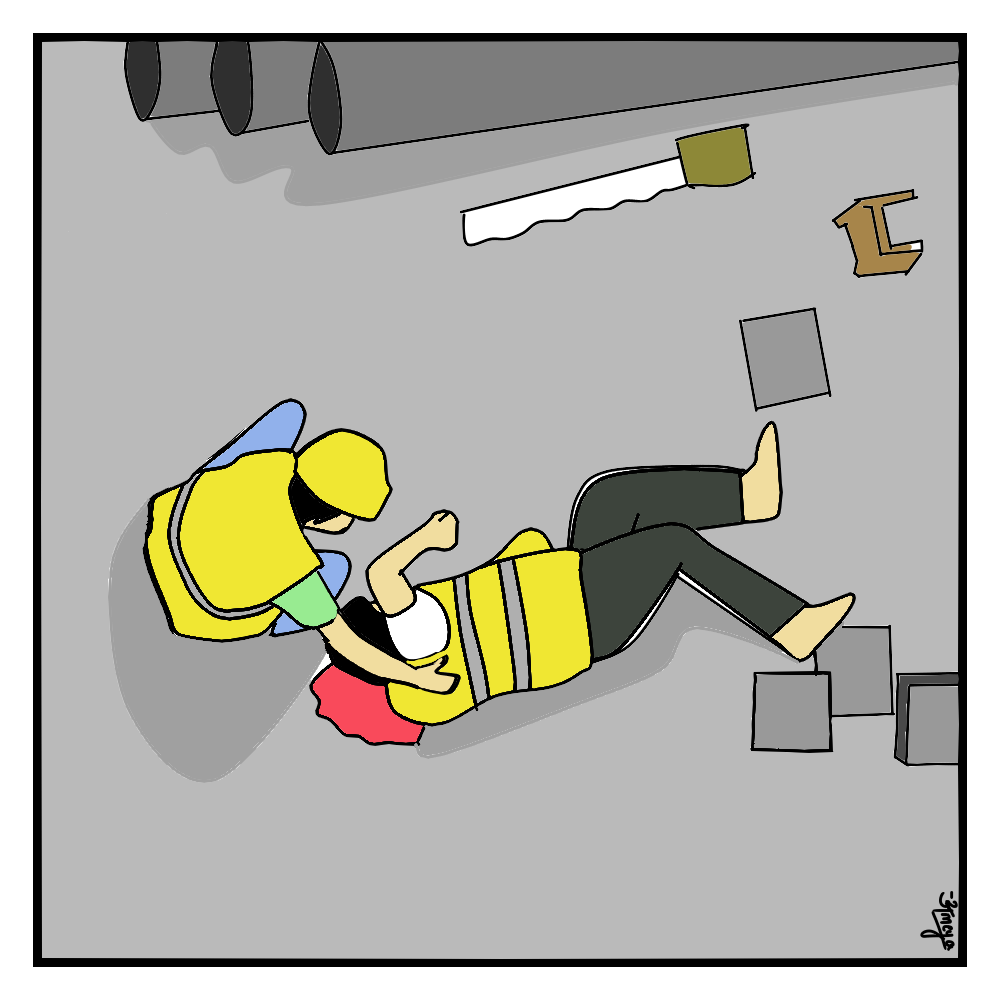October, 2020
HER Working Conditions: A look at the hazards faced on a daily basis by construction workers
3 minutes read
Meet Shilpa..
Shilpa’s day hadn’t started out well. She had a splitting headache since yesterday night but couldn’t afford to take a leave. Carrying loads of bricks for the past two hours had only made it worse. Gritting her teeth, she lifted yet another load of bricks and promptly dropped them when she heard a sickening crash. A sound that had become all too familiar now. Her pain and worry disappeared to be replaced with a single, all-consuming thought- someone had fallen and that someone was probably dead.
As she stood rooted to the spot, all the other workers rushed to the source of the sound to see their worst fears realised. The scaffolding was not secured properly and the worker, Ajay, had fallen off the height of two stories. But he was still breathing. There was hope. The contractor was informed and an ambulance was called. Being a site on the outskirts of the city, the ambulance took its time to arrive.

Once the ambulance departed, the business continued as usual. Fatalities at the site were nothing new. One of the major topics of discussion at the nakas was the latest accidents at the various work sites. The stories were quite varied and unfailingly gruesome. Last week, there was a young man who died by the load from a crane falling on him while he was welding. Two weeks back, a young mother lost her life when a tractor ran over her. Shilpa was so used to the stories that they failed to shock her anymore. But witnessing one life, put things back in perspective.
In a few hours, the workers who had gone with the injured came back to tell them that he had passed away on the way to the hospital. Then in hushed tones, they proceeded to tell that doctors said the death could have been prevented only if he had worn a helmet.
Safety helmets and safety harnesses were to be provided to all workers according to regulations but these rules were seldom followed. In fact, safety harnesses were quite a rare sight. The first time Shilpa had seen one of them, she had asked her co-worker what that contraption was with a lot of curiosity. When that seasoned construction worker not only told her what it was but also why it was mandatory, she was blown away. Shilpa had believed that danger was built into the nature of their work. She did not know that means to shield themselves against these hazards were so easily accessible. It made her question why then they weren’t provided at all sites. Were their lives only worth so much? But asking difficult questions will not provide her children with their next meal. If anything, it would prove to be a hindrance.
Somehow, Shilpa couldn’t get the incident out of her head. Ajay had two young children just like her. Their children often played together on the site. Seeing how a mishap ended his life in seconds, and even worse, had put the entire future of his children in jeopardy, made her question everything. What would she do if something happened to her? Who would take care of her kids? They did not even have a father. Who will provide for them? She thought of getting a new job- but where and how? Who would hire someone with her limited skills? With these thoughts swirling in her head, Shilpa resolved to make a serious attempt to look for other jobs.
The best and least she could do was try.
References
- Remote interviews conducted by the team at Women’s Identity and Progress

Occupational hazards is a given with most jobs. But it is the imperative of the employer and the right of a worker to be granted minimum guarantees against things taking a turn for worst.
In the case of daily wage workers, they are seen as dispensable commodities which is available plentiful in the nakas.
Construction budgets do bake in margins for safety but is often pocketed. There needs to be change at grassroots and this can only be done with better reconciliatory mechanisms and minimum security for those in question
Very well written to bring out the plight of the voiceless